Reasons for the growth of cities in 19th century Europe, and their influence on social, political and cultural developments.

image source
The most influential change in Europe in the nineteenth century was through industry. The Industrial Revolution saw three main areas of industrial growth – the textile industry with the invention of equipment for mass production; steam powered machines and engines (factories could now be sited away from watermill areas); and iron founding – with the invention of coke to replace charcoal in the process, iron production advanced significantly. Industrialisation saw a shift from the artisan and cottage industries to mass production of items as inventors began coming up with efficient mechanisms which allowed for larger-scale production, and so began centring in factories.
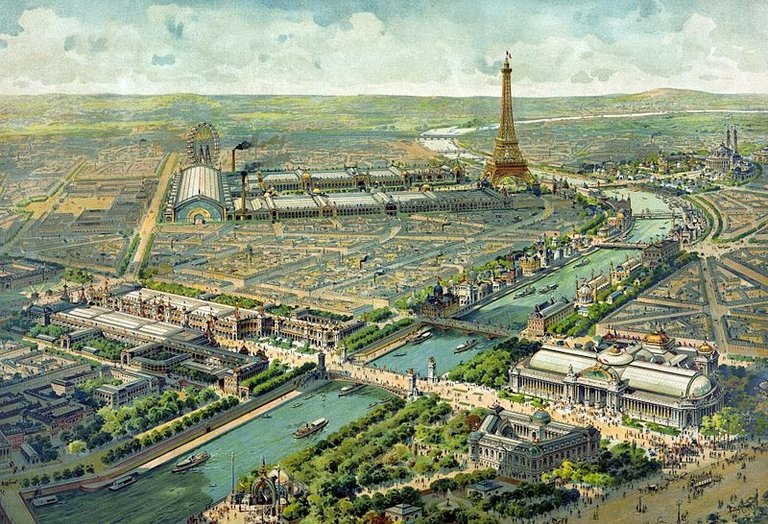
Paris, 1900
image source
Loss of agricultural harvests led to starvation and workers moved into towns to follow the work, and the factories were also positioned where the workforce would be – a self-perpetuating cycle. There was also an agricultural revolution going on – engines reduced the man-power necessary for most farming practices, farm production could increase, and costs decrease. Coal mining in England could increase production with the advent of the steam engine, which in turn could supply more coal and coke to feed the industrial machinery – unfortunately working conditions did not become safer during this time, but there were advocates who helped improve conditions eventually.
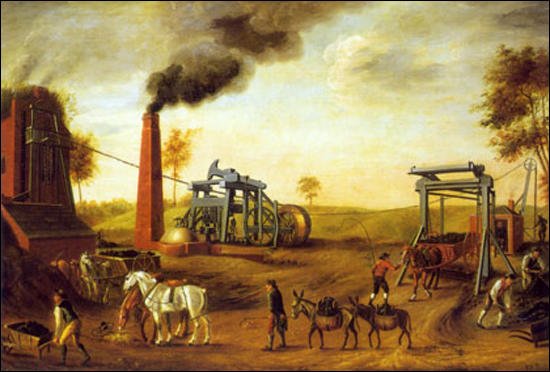
A Newcomen steam-engine being used in a coal-mine
image source
As more work was mechanised, larger machinery was needed to run it, with the flow-on effect being more coal dug, bigger machines needed to do the job, inventing more technology and more opportunities for growth. Patents were granted to inventors – this allowed an inventor to benefit substantially and gave an incentive for faster development; but also stifled possible improvements by others. Machine tools developed and opened up a whole range of possibilities for smaller-scale inventions as well as the refinement of larger ones. Large-scale chemical production developed – allowing for a lot of other inventions in a wide range of manufacturing industries and beyond. Transport infrastructure was improved – with inland roads and railways, and longer distances travelled more quickly – goods could be moved quicker and cheaper, and further away – expanding sales. Britain was the first country to feel the profitable effects of the industrial revolution, with Continental Europe following and Wallonia in Belgium leading the way. Across Europe there had been a gradual shift from philosophy - with thinking about how and why things worked, to science and the hands-on study of every aspect of people’s lives, with much achieved.

Wallonia, Belgium
image source
While some industrialists and radicals sought improved conditions for workers, overall it was very difficult; there was a rapid population increase as infant mortality rates decreased; in the early part of the nineteenth century child labour was common; trade unions were formed, strikes were held, reforms made; workers formed support groups & co-operatives. The creation of new social classes between peasants and nobility developed - middle class and working class - and depending on the trade they were in was where they slotted in on the hierarchical ladder within their class. Peasants now had the chance to move up the hierarchy of society by earning wages, making consumer decisions, and paying taxes. They began to have a voice in the economy, and a chance to have dreams and aspirations realised, but a more capitalist society was also seen – the rich blossomed and the workers suffered. Growth of new complementary businesses such as advertising and marketing of products and services, goods-distribution, savings banks, insurance, research and development occurred.
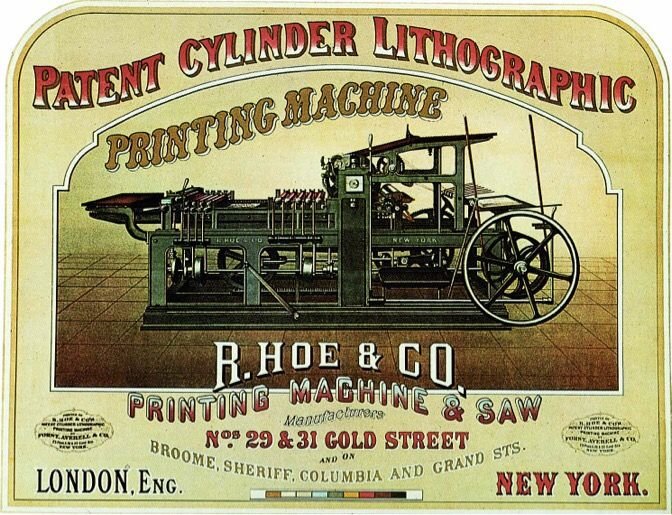
advertisement
image source
The demographics of places changed - industrialisation saw the movement of workers from rural areas to urban areas, they then began moving regionally, and later overseas. Families nuclearised and the role of the woman changed. She lost her equal standing role from rural life and became secondary to the male ‘breadwinner’. The larger towns showed the distinct differences which had developed between the poor classes and the upper classes – they were split into areas within the city - while the poor lived in squalid over-crowded conditions the bourgeoisie lived in architectured homes surrounded by parks and boulevards. The growth of towns and cities put pressure on living conditions – diseases sometimes became epidemics, causing widespread devastation, but those same health issues also brought inventions and solutions to many problems. There was a growth in organised crime which led to the creation of a police force. Charitable work moved from being solely within the church’s domain to private organisations dishing out social care, and there was more emphasis put on increasing education for the masses.
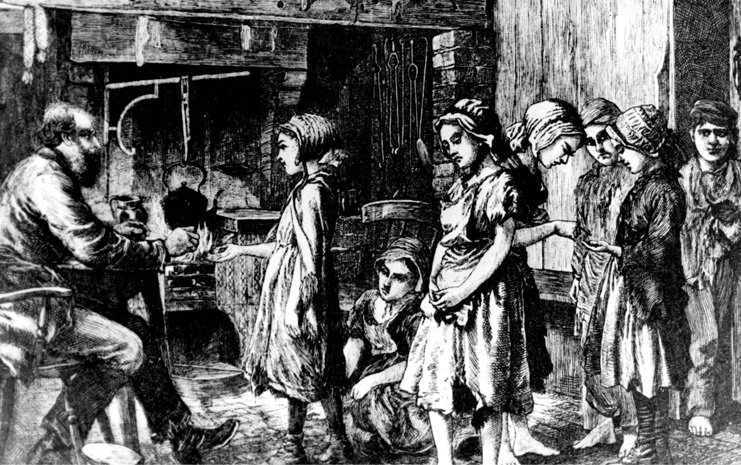
a paymaster giving wages to child workers
image source
As urbanisation occurred in Europe people became more demanding for equal rights – developing ideals of liberalism and socialism, and organising trade unions to bring about changes in working and living conditions for the masses. Poor conditions and dissatisfaction with the system caused revolutions and uprisings - the French people ousted the monarchy as the figurehead of France, but reinstalled it as head of the French people, while turning to a more republican system. Marxism was born from the industrial revolution – one man’s ideals on how to make the system better for all.
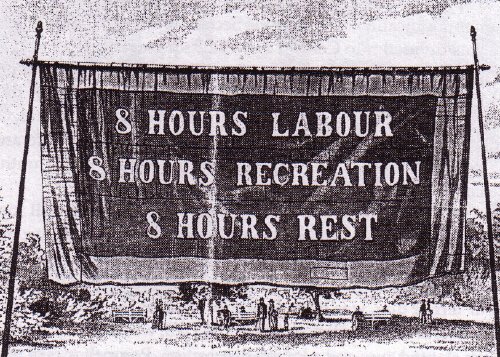
image source
Culture in Europe developed significantly. There was a marked growth in urban culture and a great increase in leisure pursuits for the upper classes. In the art world realism was bringing art down from existential heights to what was going on in everyday life, with close observation of nature and capturing it as it existed. Romanticism had artists trying to pull the beauty and nature out from an ugly industrial landscape and capitalistic people. These led in the later part of the nineteenth century to impressionism - the artist’s perception of what he was viewing – a radical step away from the norm which took a while to be accepted into popular culture. The artist had stepped out of the studio to try and capture the transitory effects of light on a subject. Within the musical arts many of the great composers lived in the 19th century, creating masterpieces in the era of romanticism. Printing and publishing of books and newspapers increased rapidly thanks to steam power and literature saw the development of romanticism, modernism, and naturalist writings.
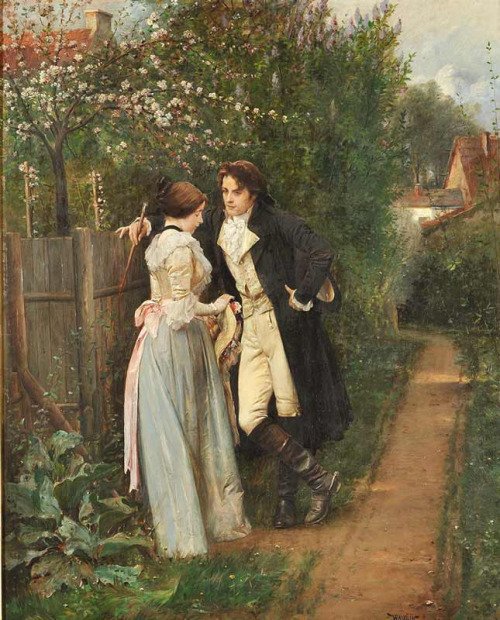
The Fence by Vaclav Brozik
image source
The French led the way in the creative arts development of fashion clothing with the launching of haute couture, and were the first to use live mannequins to show off their creations; they established couturier houses, and created the first fashion magazine. The Louvre is the largest art museum in the world, with other European countries also developing important facilities. Philosophers developed their musings; new churches were founded – such as the Salvation Army and the Seventh Day Adventists. Glass-making – the production of sheet glass, from a process developed in Europe - allowed architects to plan more open space in their buildings and architecture to become more creative. Gas lighting came into use on a large scale especially in urban areas where the use of this artificial light enabled shops to stay open longer and the growth of social activities in the evenings to develop markedly – opera, theatre, musicales, gaming hells and clubs, balls and parties.
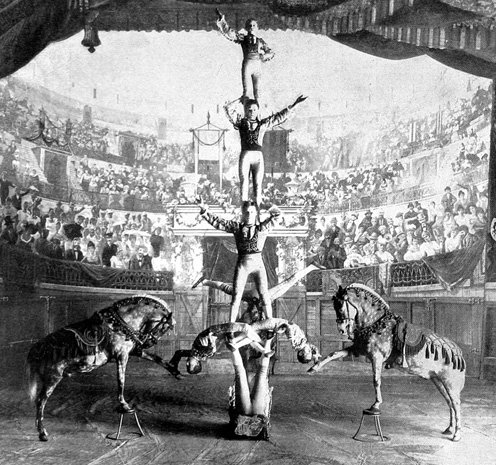
A music hall show at London's Empire Theatre, 1898
image source
The nineteenth century saw a rapid expansion in the social, political and cultural arenas across Europe. The growth of industry was a major contributor to all areas, sometimes for the better, sometimes not. The rich got richer; the poor lost a communally supportive way of life although some now had the chance to move up the social ladder. New classes of people were created as they now fitted somewhere between the nobility and the peasant. There was a move from looking solely to God for answers, to the fields of science and philosophy. People migrated away from their traditional villages into towns, and sometimes as far as another country to try their luck at better lives. Education became available to more than a select few, and knowledge was able to spread further due to the printing press. People of the upper classes indulged themselves in more frivolous pursuits such as fashion and balls. There was a move away from monarchy-led states and other systems introduced into the political arena. Overall, it seems that the pendulum swung wildly between extremes in all areas of life in Europe in the nineteenth century.
This essay was one I wrote as an assignment, while obtaining my University degree. I have included the reference list and bibliography - reference materials I used while writing - just as I’d had to for its submission. It has never before been published anywhere public, though. Images have been added for visual interest, and I also broke up longer paragraphs for easier reading.
Bibliography:
Norman Davies, Europe: A History, London: Pimlico, 1997
The Industrial Revolution, retrieved 18 May 2009, from:
http://en.wikipedia.org/wiki/Industrial_revolution
The Nineteenth Century, retrieved 17 May 2009, from:
http://en.wikipedia.org/wiki/19th_century



I can't imagine life before industrial revolution, it must have been boring and tiring. Industrial revolution made the impossible possible and also influence the way we live.
I would imagine (not that I've yet studied this though) that for those hard-working agricultural communities their annual festivals and celebrations had extra importance because of how they gave some relief from the daily grind, and brought the community close together.
With the industrial revolution they lost a lot of that, I'd imagine, or it morphed into different things.
You received a 60.0% upvote since you are a member of geopolis and wrote in the category of "geopolis".
To read more about us and what we do, click here.
https://steemit.com/geopolis/@geopolis/geopolis-the-community-for-global-sciences-update-4
This is a curation bot for TeamNZ. Please join our AUS/NZ community on Discord.
For any inquiries/issues about the bot please contact @cryptonik.
Very intersting, [no this is not a bot]
lol, thank you kind Sir-not-a-bot. ;)
Just in case you were reaching for the trigger.
lol, always keep a can of this by the computer ;)

I need a case lot of that, the " nice post" ers just seem to neeeed a spray or six.
Truth! lol
Maybe we should all just post a copy of that pic under every spammer's comment. :D
This was a really wonderful read alongside very pleasantly fitting pictures. I love exploring the history of our development aswell, keep up the top quality contributions.
Thank you very much for enjoying the essay. :)
I heard from @simon62 that there are some excellent posts about various historical topics on your blog and he wasn't wrong at all!
Oh, thank you very much for saying so! :)
And of course a thank you to @simon62 as well for his continued enjoyment of the essays. :)
There is no shortage of creative talent on Steemit, but a large number of them are visual arts related and I do love reading so anything I can sit down and enjoy (plus learn something in the process) is always a pleasure for me :)
A compaction of two, maybe three centuries in a very comprehensible read. Thank-you @ravenruis.
Keep on keeping on 😇
I am glad the people I refer do come here. Many of us do not get this in-close view from our movie culture, and your essays make a lot of sense, when seen as to join parts of the whole. 😊
5 days old. Resteemed.